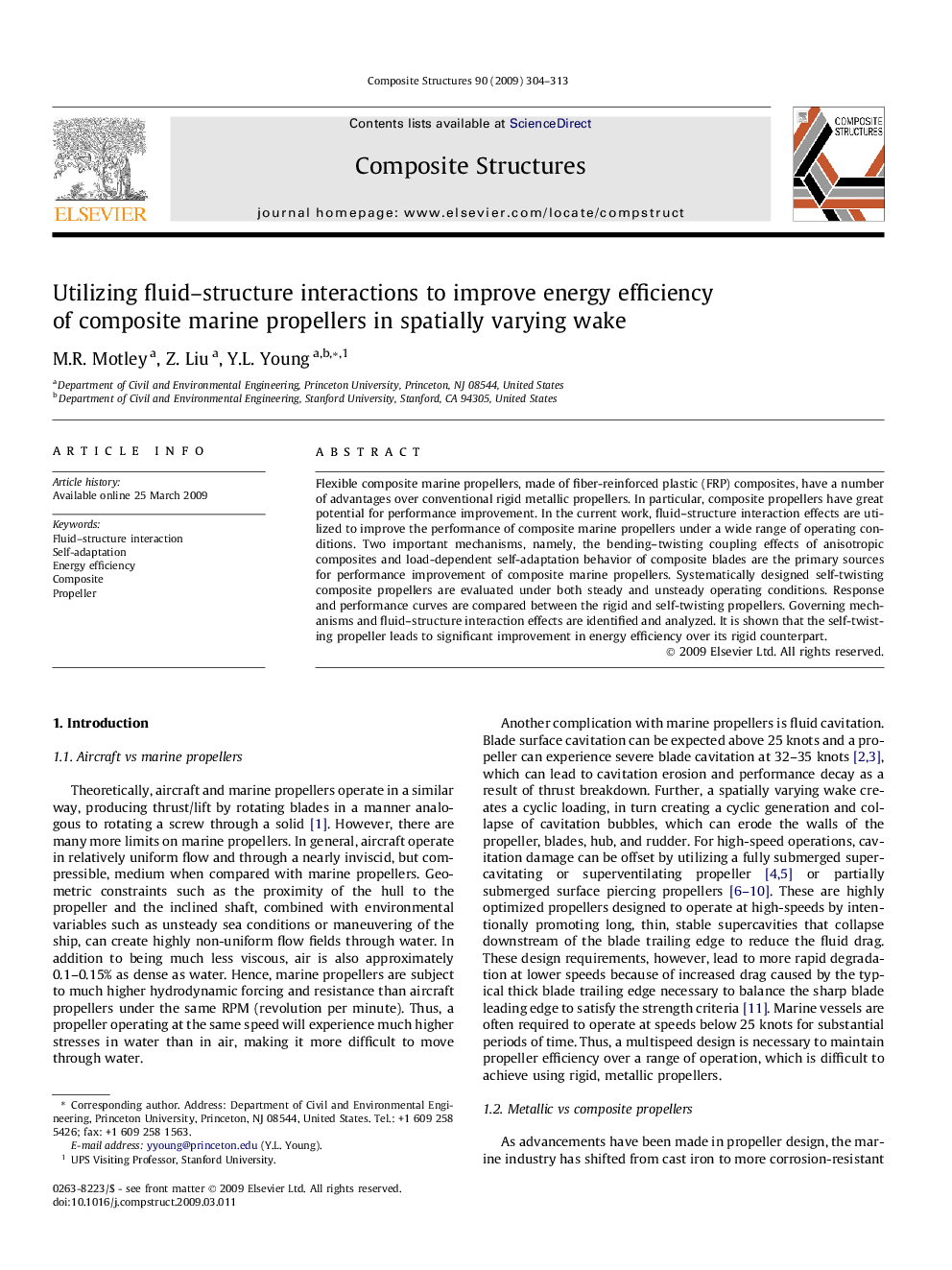| Article ID | Journal | Published Year | Pages | File Type |
|---|---|---|---|---|
| 253365 | Composite Structures | 2009 | 10 Pages |
Flexible composite marine propellers, made of fiber-reinforced plastic (FRP) composites, have a number of advantages over conventional rigid metallic propellers. In particular, composite propellers have great potential for performance improvement. In the current work, fluid–structure interaction effects are utilized to improve the performance of composite marine propellers under a wide range of operating conditions. Two important mechanisms, namely, the bending–twisting coupling effects of anisotropic composites and load-dependent self-adaptation behavior of composite blades are the primary sources for performance improvement of composite marine propellers. Systematically designed self-twisting composite propellers are evaluated under both steady and unsteady operating conditions. Response and performance curves are compared between the rigid and self-twisting propellers. Governing mechanisms and fluid–structure interaction effects are identified and analyzed. It is shown that the self-twisting propeller leads to significant improvement in energy efficiency over its rigid counterpart.
